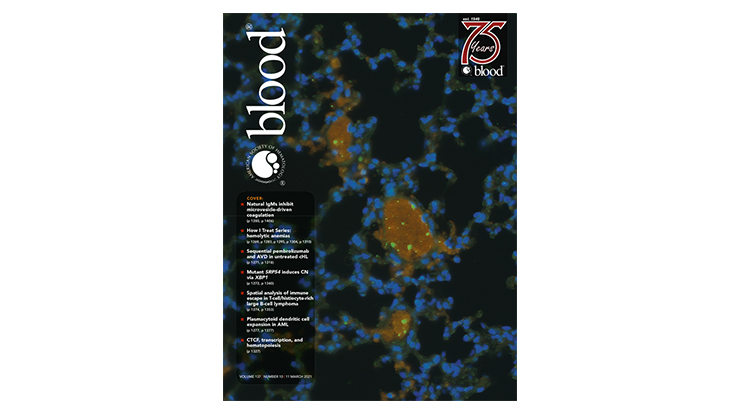Team 2 has just published a new article
+ Impaired adhesion of neutrophils expressing Slc44a2/HNA-3b to VWF protects against NETosis under venous shear rate
Venous thrombosis (VT) is the unwanted formation of a blood clot that will come to block our veins and complicate in a number of cases into sometimes fatal pulmonary embolism. The mechanisms involved are still poorly understood, however, work carried out over the last 10 years has highlighted the importance of inflammatory phenomena in its triggering. A central role has been attributed to neutrophils, key cells of innate immunity, but also to von Willebrand factor (VWF), an adhesion protein released by cells lining the vascular wall during vessel stress. Studies conducted by our laboratory (C2VN, Inserm U1263) identified that individuals with a genetic variant, a glutamine at position 154 of the Slc44a2 protein, had a reduced risk of developing venous thrombosis of the order of 30% compared to those who had an arginine at this position (Germain et al., Am J Hum Genet 2015). In this study, we wanted to determine the link between Slc44a2 and VT, knowing that Slc44a2 is an original protein because no function in coagulation or clot dissolution had been previously attributed to it.
Using different in vitro and in vivo approaches, we showed here that the Slc44a2 protein present on the surface of neutrophils acted as a receptor by allowing their recruitment and activation on VWF under venous flow conditions. We used cells carrying Slc44a2 with either the protective form of TV with glutamine 154 (Slc44a2/HNA-3b) or the so-called “at risk” form with arginine 154 (Slc44a2/HNA-3a). We thus demonstrated that cells with the protective form lost their ability to adhere but also to activate and form “neutrophil extracellular traps”, more commonly called “NETs” on VWF in the presence of venous flow. These NETs are structures composed of unwound nuclear DNA, organized in the form of sticky nets and studded with antimicrobial proteins released by the neutrophil. These NETs strongly stimulate clot formation and also participate in clot structuring. We showed that Slc44a2 became particularly important in neutrophil adhesion and NETs formation when flow was lower, when an inflammatory state was simulated, or when the neutrophil concentration increased, as may be the case during infection, which is a predisposing factor for VT.
Thus, this study proposes a new mode of neutrophil recruitment and activation at the vascular wall by taking into account the biophysics of flow forces encountered in veins. This work also proposes a new mechanism explaining the protective effect of Slc44a2/HNA-3b against Slc44a2/HNA -3a in VT. Targeting Slc44a2 may thus represent a promising new therapeutic target in VT.
To read the full paper, head to the following link:
https://ashpublications.org/blood/article-abstract/doi/10.1182/blood.2020008345/475196/Impaired-adhesion-of-neutrophils-expressing?redirectedFrom=fulltext
You have comments, questions on this work? We’ll be happy to exchange further with you.


